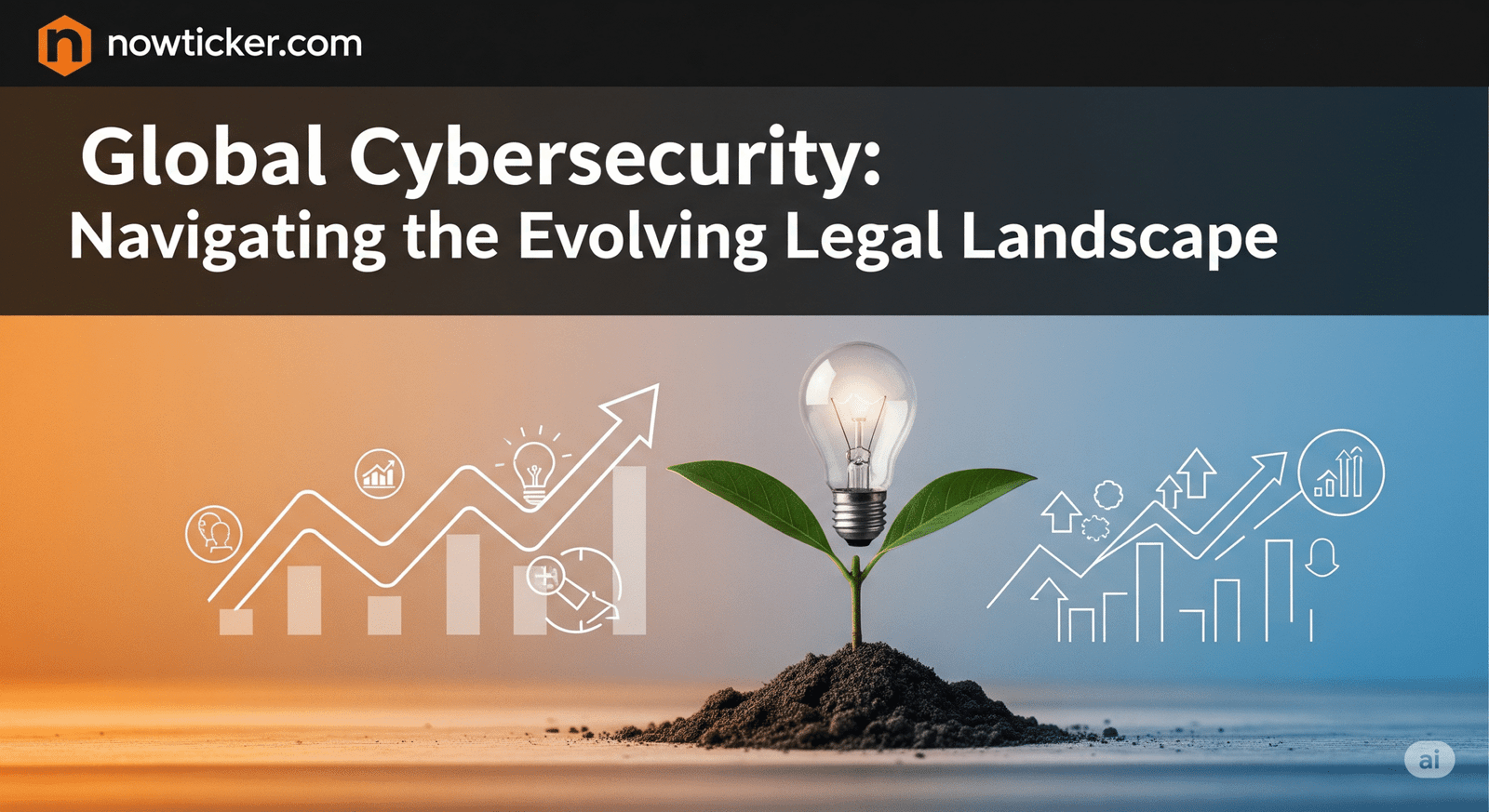Contents
Introduction
In an era where the digital sphere governs significant aspects of personal and professional life, cybersecurity has emerged as a critical concern for individuals, organizations, and governments alike. The rapid evolution of technology, from cloud computing to the Internet of Things (IoT), has birthed new vulnerabilities and threats. As a result, navigating the legal landscape of cybersecurity is not just essential for compliance; it is essential for survival. The confluence of differing national laws, international regulations, and rapidly changing technological components complicates how cybersecurity is governed globally.
This article will offer an in-depth exploration of global cybersecurity, highlighting the emerging legal frameworks, recent case studies, expert insights, and practical tips for implementation. As we advance, a focus will remain on how individuals and organizations can adapt to the shifting requirements and leverage best practices to ensure robust cybersecurity.
The Evolving Legal Landscape
Historical Context and Regulatory Frameworks
The legal landscape surrounding cybersecurity has been continually evolving. Traditionally, legal frameworks were reactive, established in response to significant security breaches or data-related incidents. Notable legislative milestones include the U.S. Health Insurance Portability and Accountability Act (HIPAA) of 1996, the EU’s General Data Protection Regulation (GDPR) enacted in 2018, and the California Consumer Privacy Act (CCPA) of 2018.
These laws represent efforts to protect personal data and provide a regulatory framework for organizations to follow as they manage sensitive information. GDPR, in particular, has had a global impact given its extraterritorial reach; any company handling the data of EU citizens is mandated to comply, regardless of their geographic location. As noted by cybersecurity expert Dr. Jane Lee, “GDPR has established a benchmark for data protection laws worldwide, prompting countries to reassess their own regulations in light of this comprehensive approach.”
Current Regulatory Trends
With the advent of new technologies, regulatory trends are also shifting. One of the most significant recent developments is the rising emphasis on accountability and transparency. The European Union is working on new directives that build upon the foundational principles set by the GDPR, specifically within their 2025 Digital Services Act (DSA) and Digital Markets Act (DMA). The DSA aims to hold digital platforms accountable for harmful content, while the DMA targets anti-competitive practices among major tech companies.
In the U.S., cybersecurity initiatives have gained momentum through the Biden Administration’s focus on resilience and security. The 2025 Executive Order on Improving the Nation’s Cybersecurity underscored the need for enhanced cooperation between the public and private sectors to bolster defenses against cyber threats. Furthermore, legislation like the Cyber Incident Reporting for Critical Infrastructure Act mandates timely reporting of significant cybersecurity incidents, putting more pressure on companies to be vigilant.
For businesses operating in multiple jurisdictions, complying with a patchwork of regulations can be a daunting task. According to a report by the World Economic Forum, over 85 countries have implemented or are in the process of developing cybersecurity legislation, leading to a complex regulatory framework that organizations must navigate.
Real-World Case Studies
One of the most illustrative examples of the consequences of inadequate cybersecurity measures is the 2017 Equifax data breach, which exposed the personal data of approximately 147 million people. The aftermath highlighted significant gaps in U.S. cybersecurity regulations, as the Federal Trade Commission (FTC) lacked direct authority to enforce cybersecurity measures comprehensively. As a result, Equifax faced a settlement of $700 million. This case illustrates the consequences of inadequate protection and regulatory gaps, reinforcing the idea that organizations must be proactive rather than reactive.
Conversely, compare this with the GDPR enforcement against British Airways in 2025, which led to a fine of £20 million for neglecting customer data protection, illustrating the stringent penalties established under EU law. This juxtaposition serves as a wake-up call for organizations that consider themselves impervious to cyber threats: they are not. Companies must remain vigilant and proactive in adhering to the evolving legal landscape.
Trends Shaping Cybersecurity Laws
The Rise of Cyber Insurance
As cyber threats escalate, a growing number of businesses are turning to cyber insurance as a safety net. A report from the Insurance Information Institute found that the cyber insurance market is projected to exceed $20 billion by 2025. Insurance companies are increasingly mandating better security practices among policyholders, effectively incentivizing organizations to enhance their cybersecurity measures.
However, businesses must be cautious; acquiring cyber insurance does not absolve them from responsibility. As cybersecurity consultant Mark Thompson states, “Having cyber insurance is vital, but it should be seen as a supplement to, not a replacement for, robust cybersecurity practices.” Companies must employ a comprehensive risk assessment strategy to understand their vulnerabilities and the types of coverage that best suit their needs.
Increasing Importance of International Cooperation
Given the borderless nature of the internet, international cooperation is vital for effective cybersecurity. Organizations must navigate different regulatory environments, making collaboration an essential strategy for companies operating globally. The establishment of agreements like the EU-U.S. Data Privacy Framework aims to ensure that information can flow freely while still providing adequate protection for individuals.
This need for international cooperation is echoed by experts such as Dr. Helen Ma, who emphasizes, “Cybersecurity is inherently global. Attacks can originate from anywhere, and as such, a collaborative approach among nations, businesses, and institutions is crucial.”
The Role of Artificial Intelligence
Artificial Intelligence (AI) is emerging as a double-edged sword in the realm of cybersecurity. While AI can enhance threat detection and response mechanisms, it also raises ethical questions and introduces new types of vulnerabilities. Reports from the Cybersecurity & Infrastructure Security Agency (CISA) have identified AI-driven attacks as a growing concern, requiring organizations to adapt their cybersecurity protocols.
In response, businesses are encouraged to invest in AI technologies that enhance their defenses but also to remain knowledgeable about the potential risks that AI presents. Training employees on the ethical implications of AI, coupled with transparent policies regarding AI use, becomes vital.
Practical Tips for Stronger Cybersecurity Postures
Implementing Robust Policies
Organizations must develop comprehensive cybersecurity policies that include protocols for data handling, incident reporting, and employee training. Regularly updating these policies in line with evolving regulations is crucial. Involve legal counsel when drafting policies to ensure compliance with applicable laws.
Employee Training and Awareness
Human error is a leading cause of security breaches. Conducting regular training sessions for employees can significantly reduce risks. Consider a mix of online and in-person training focused on phishing, malware, and social engineering tactics. Ensuring that employees understand the importance of cybersecurity can foster a culture of vigilance.
Regular Security Audits
Organizations should conduct routine security audits to evaluate vulnerabilities and ensure compliance with relevant regulations. Consider using third-party auditors for an objective assessment. Regular audits help organizations adapt to evolving threats and legal requirements.
Embracing Cyber Insurance Wisely
As mentioned earlier, obtaining cyber insurance is a prudent step. However, it is important to scrutinize policy details carefully. Understand the terms, coverage limits, and exclusions. Regularly review your insurance as your organization grows and changes to ensure adequate coverage aligns with your evolving risk profile.
Collaborating with Cybersecurity Experts
Beyond internal capabilities, organizations can benefit from collaborating with third-party cybersecurity experts or consultants. These professionals can provide tailored strategies and solutions that consider the current legal landscape. Building partnerships enhances security and ensures regulatory compliance.
FAQs
1. What is the GDPR and why is it important?
The General Data Protection Regulation (GDPR) is a comprehensive data protection law enacted by the European Union. It protects the privacy and personal data of EU citizens and holds organizations accountable for how they handle this data. GDPR sets a global precedent, influencing laws in numerous countries.
2. How can businesses ensure compliance with multiple regulatory frameworks?
Businesses can ensure compliance by developing integrated compliance strategies that address varying requirements. Regularly consulting legal professionals and compliance experts can aid in navigating the complex landscape and ensuring full adherence to laws.
3. What are some best practices for data protection?
Best practices for data protection include implementing strong passwords, encrypting sensitive data, conducting regular audits, training employees on security protocols, and developing incident response plans.
4. Is cyber insurance necessary for small businesses?
While not mandatory, cyber insurance can offer crucial protection against potential financial losses attributable to cyber incidents. Small businesses should assess their specific risks and consider cyber insurance as part of their broader risk management strategy.
5. What role does employee training play in cybersecurity?
Employee training is critical in minimizing human errors that can lead to cybersecurity incidents. Through continuous training, employees are better equipped to recognize threats and respond appropriately, establishing security as a shared responsibility.
Conclusion
The landscape of global cybersecurity is in a continuous state of flux, driven by technological advancements and evolving legal requirements. As threats grow in sophistication, so too must the responses from organizations—embracing proactive strategies to secure sensitive data and comply with legal obligations. Whether through robust policies, employee training, or international cooperation, stakeholders in this digital ecosystem must remain engaged and informed.
As we look towards the future, the intertwining of technology and law will play a pivotal role in shaping our cybersecurity environment. Embracing collaboration and innovation, fostering a culture of security awareness, and adapting continually to the evolving legal landscape will be key for organizations aspiring not merely to survive but to thrive in an increasingly complex cyber-world.



